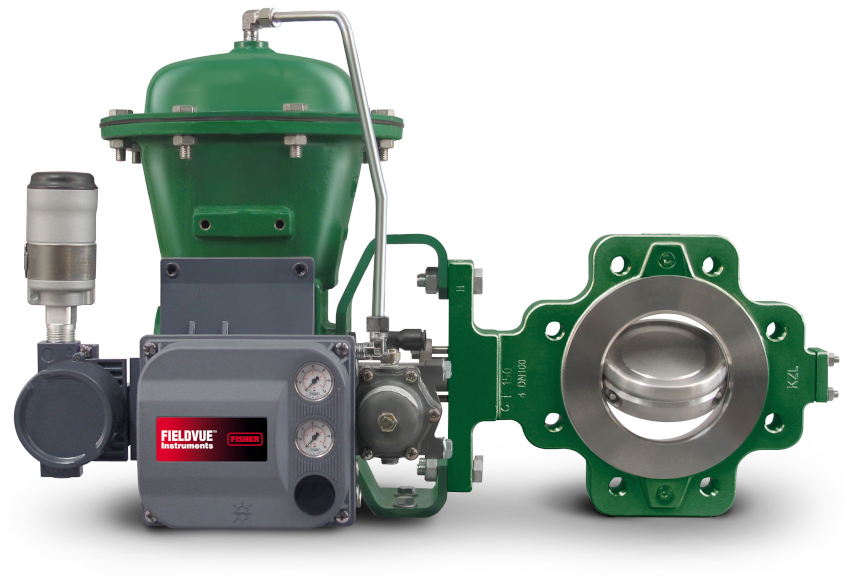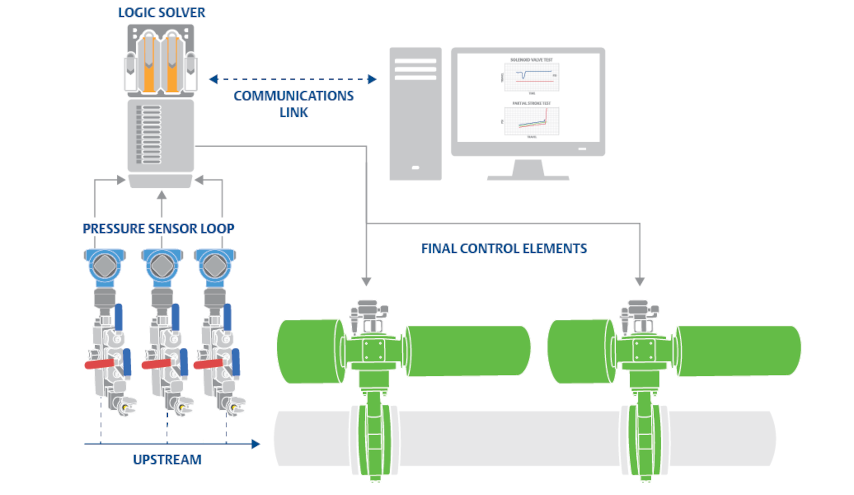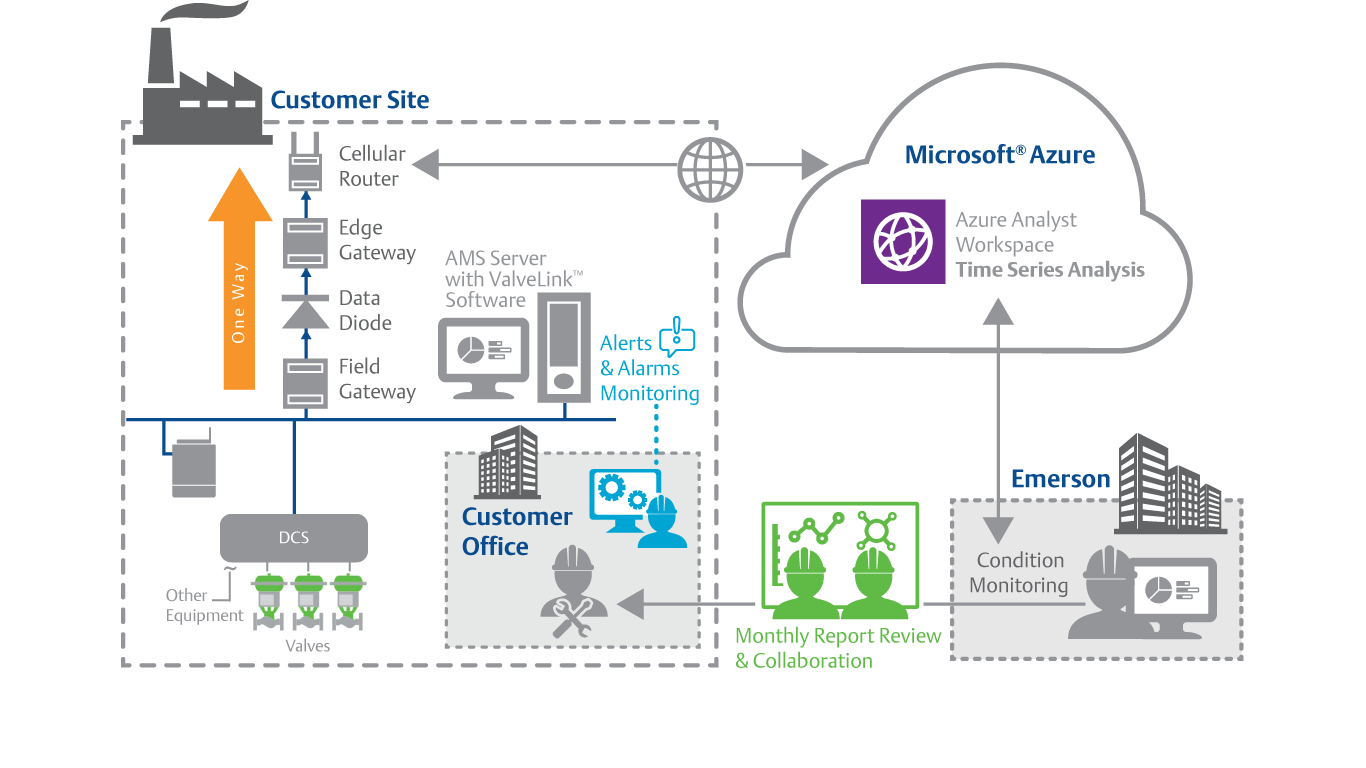Saurabh Pathak, Emerson’s Digital Valve Global Marketing Director and Naman Tahan, Emerson’s Digital Valve Services Director of Engineering and Operations, recently published an article in the March 2023 issue of Processing. It is titled “The Future is Now for Predictive Valve Maintenance” and it describes how advances in digital valve controllers, diagnostic software, and network communications are enabling significant reductions in maintenance costs and unplanned outages. The article is summarized below.
Plants have pursued the elusive goal of predictive maintenance for decades, hoping to reduce maintenance costs and unplanned outages. However, few initiatives have succeeded to the extent hoped for because predicting the future is notoriously difficult. This article discusses a variety of diagnostic and data-driven, initiatives that are finally making predictive maintenance achievable.
Proactive versus reactive repair
The unanticipated failure of automated control and on-off valves costs millions of dollars annually. Unfortunately, many valves offer no obvious hint of developing problems because modern controllers tend to compensate and hide degrading performance. Eventually, the valve fails completely, creating process upsets or shutdowns.
There are usually hints of an impending failure, but the signs can be quite subtle. Still, if these clues could be detected and acted upon, it would be possible to proactively schedule a brief outage, or bypass the valve and perform repairs, minimizing production loss and cutting maintenance costs.
Data is the key ingredient that makes predictive maintenance possible, with more information and improved analysis enabling increasingly accurate predictions. Historically, automated valve data has been limited to valve position, but every new generation of smart diagnostic digital valve controller captures more information (Figure 1).

Figure 1: Smart digital valve controllers, like this Fisher FIELDVUE DVC6200 SIS Digital Valve Controller, employ a variety of sensors that detect supply air, actuator, packing, and valve problems.
Digital valve controllers employ an array of sensors to monitor the valve and detect abnormal conditions, with higher-tier units offering off- and on-line monitoring to capture difficult-to-detect ongoing valve performance and transient problems. These capabilities are improving, as the author explains:
The next generation of digital valve controllers are already well into the design stage, and they will provide even more data that can be utilized to monitor valve operation, packing performance, system integrity, and much more. New software apps will automatically analyze all available data to provide insights and recommendations.
Data is only useful if you use it
Data is certainly a key ingredient, but no predictions are possible unless a knowledgeable entity receives and evaluates the information to draw accurate conclusions. The process is stymied by three main problems:
- Many older valve controllers lack the ability to sense and capture the necessary data.
- The digital valve controller may capture the data, but the information is unavailable until it is accessed in the field.
- The digital valve controller may be connected to a network, with the data transmitted and stored, but there are no knowledgeable resources to review it.
The first issue is being resolved as older valve positioners are replaced with diagnostic digital valve controllers. Investing in higher-tier controllers for critical or severe service valves typically pays immediate dividends due to improved diagnostics capability, lower maintenance costs, and increased uptime.
The second issue of captured but unused data is being addressed by higher tier digital valve controllers that offer multiple options for transmitting the data over wired or wireless communication protocols (Figure 2).

Figure 2: One common method of valve data capture utilizes the control system connections to transmit the information to a maintenance database, where it can be analyzed.
Transforming data into savings
The authors discuss the last major challenge:
Perhaps the most difficult aspect of a predictive maintenance system is finding a knowledgeable resource who can assess the information, detect developing issues, and initiate actions that can address the problems in advance of outright failure. Fortunately, a number of solutions are already in place, with several more in development.
Fisher ValveLink is an on-site data management solution that performs scheduled online valve testing, and continuously monitors and alarms a variety of valve issues. Future software enhancements will use machine learning and artificial intelligence to flag developing problems and suggest solutions.
Companies with limited resources can leverage remote experts to monitor valve data and alert plant personnel to developing problems (Figure 3).

Figure 3: When a plant lacks the proper knowledge or resources, critical valve data can be securely transferred to remote experts for continuous monitoring.
Conclusion
Predicting the future is not easy, but it is possible when the right data is gathered and reviewed by a knowledgeable entity. The authors conclude with this comment:
Wise investments in equipment upgrades or new equipment specifications, along with remote expert services when needed, will pay big dividends in the future. Predictive maintenance is finally possible, and it will only improve with time.
Visit the Fisher FIELDVUE DVC6200 SIS Digital Valve Controller & Fisher FIELDVUE ValveLink pages and the Digital Valve Services section on Emerson.com for more of ways to drive safer, more efficient, and more reliable operations.
